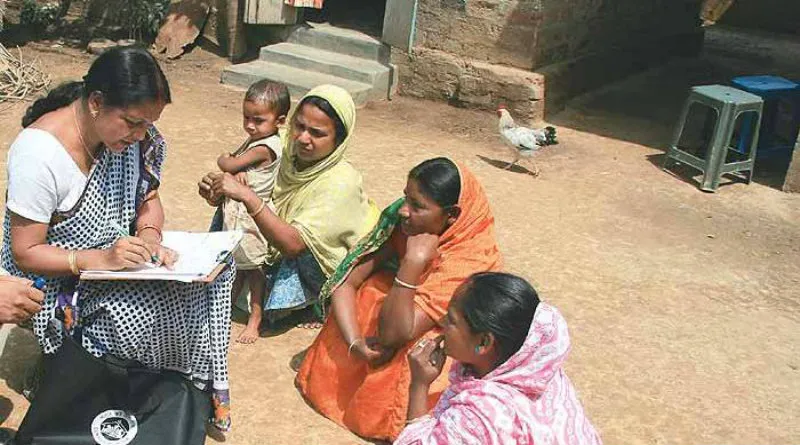The decision taken at a meeting of the Cabinet Committee on Political Affairs (CCPA), headed by Prime Minister Narendra Modi that caste enumeration will be part of the upcoming census exercise represents a tectonic shift in the BJP’s politics. It not only suggests the saffron party is ready to hijack the main poll plank of the Congress and its allies – the RJD and the SP -, but also to make it an integral component of its Hindootva politics.
This is a variation of what was once known as the Mandal-Kamandal politics which was a combination of Dalit politics unleashed by the Mandal Commission report and the Hindootva ideology of the BJP. In 1979 the Morarji Desai-government appointed a commission under the chairmanship of Bindheshwari Prasad Mandal, who was then the Member of Parliament from Madhepura constituency in Bihar. The commission was entrusted with the task of identifying socially and educationally backward classes in India. In its findings the commission identified a total of 3,743 different castes and communities as backward on certain parameters. These castes comprised nearly 52 per cent of the country’s population. The commission proposed the idea of giving 27 per cent reservation to these backward castes/classes in public employment along with SCs and STs.
However, after VP Singh became Prime Minister in 1989, he decided to implement the Mandal Commission recommendations to consolidate the votes of backward castes in his favour. But, the whole exercise became embroiled in bureaucratic procedures and continuous judicial interventions. It was finally implemented in 1993 during the tenure of the PV Narasimha Rao government. To counter this politics, the BJP launched its Kamandal politics to rally and unite the Hindoo population behind it. Many fence sitters who earlier were not supportive of the BJP did change their minds and stood with the BJP.
Also Read: Caste census takes centre stage: BJD, Cong claim credit; BJP asserts move not driven by oppn demands
The irony this time is that the BJP itself is espousing caste census to get electoral mileage along with its core Hindootva politics. The Assembly election in Bihar is due later this year and the caste composition of the state offers the best opportunity to test the efficacy of the new policy. The strategy of the BJP shows its nervousness over the Opposition’s move to consolidate its support base among the backward castes – mainly the OBCs – through its vocal demand for a caste census. Such a conclusion is inescapable considering the fact that the PM during the 2024 Lok Sabha poll launched a scathing attack on the Congress election manifesto that promised a caste census as a reflection of its “Urban Naxal” thinking. With that electoral propaganda, the BJP then asked the people for a massive LS majority so that it could overhaul the Constitution. The OBC and the Dalit groups saw in it a threat to dismantle caste reservations. This fear translated into votes for the Opposition for which the BJP failed to get a simple majority and fell far short of its expected tally of over 400 seats.
Though the BJP has recovered much ground since then winning the elections in Maharashtra and Haryana, it seems it is not sure whether its hard-core Hindootva politics will pay the dividends as it expects in the next LS polls, given the undercurrent in favour of caste census. Till recently, the PM was telling the nation that there are only four castes in the country – women, youth, farmers and the poor. This was obviously an attempt to slam the Congress’ demand for caste census and removal of 50 per cent cap on reservations for SC/ST and OBCs.
Also Read: Odisha: Boy makes e-Scooter by watching YouTube tutorials
The government decision in a way follows the predictable pattern of functioning which is to spring surprises and catch the Opposition unawares. There is no doubt that the Opposition is indeed flummoxed by the announcement as is clear from Congress leader Rahul Gandhi’s response: “Modiji used to say there are only four castes in the country. I don’t know what caused the change of heart in the BJP.” The country was happy that he was clueless.
However, the decision appears to be well thought out and a huge gamble. The BJP can ill afford to let the ground slip further. Pahalgam has been a mortal blow on the already fragile support frame work. Another clumsy Balakot style ‘surgical strike’ will not help quieten the vociferous groups trying to push India into a vortex of war. The people in power well understand that the Indian armed forces may not be willing to get entangled into a long drawn war. The world is watching current wars in Ukraine and Gaza. The minimum time that it has taken these yet unresolved conflicts has stretched to a few years. Those countries are not able to see the end of the fighting. The Indian populace and its economy are in no position to get into a long drawn military operation in which, most likely, China could play a direct role. Announcement of caste census has been a great help and hopefully it will divert attention from war to politics and, better still, caste based petty politics.

